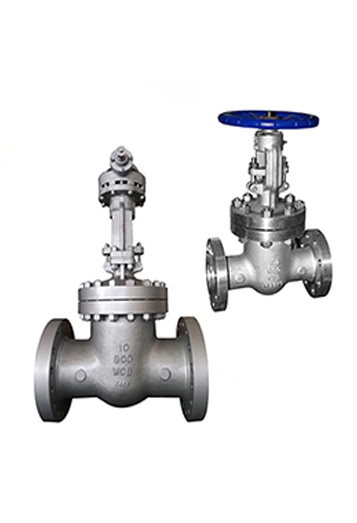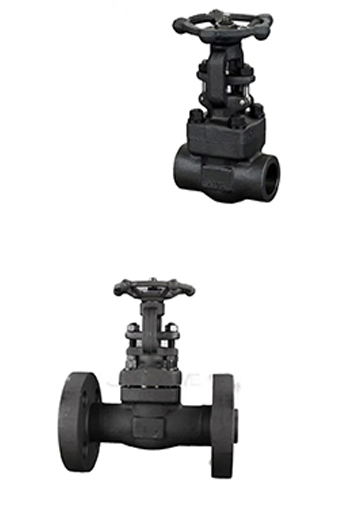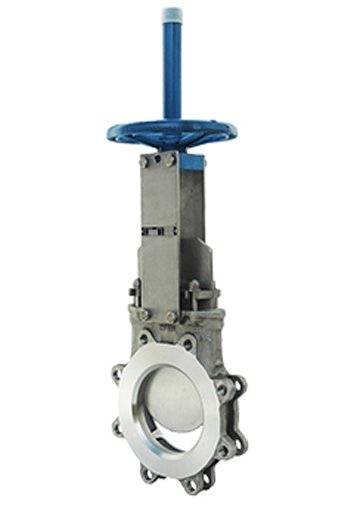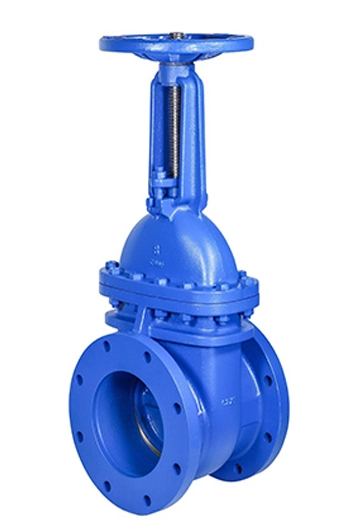Gate valves are primarily designed for on-off services when a straight-line flow of fluid and minimum restriction is desired. The gate valve is perhaps the most frequently used valve in piping systems. It is a general service valve that is used primarily for on-off, no throttling applications. KFTE Gate Valves are designed and manufactured strictly to International Standards API 600, API 602, ASME B16.34 or equivalents. Pressure Ratings from Class 150 to Class 2500, PN16 to PN420. Sizes Ranges from 1/2" thru 48". Ends Connections in Flanged R.F or RTJ, butt-weld. A wide range of materials are available from KFTE Gate Valve, including Carbon Steel, Low Temperature Carbon Steel, High Temperature Alloy Steel, Stainless Steel, Duplex & Super Duplex Steel.




1. On/Off Flow Control:
Primarily designed to fully open or fully close fluid flow in pipelines.
When open, the gate (a wedge or parallel disc) retracts entirely into the valve bonnet, creating an unobstructed flow path with minimal pressure drop and turbulence.
When closed, the gate forms a tight seal against seats, preventing leakage.
2. Design Advantages:
Simple construction with components like a body, bonnet, gate, stem, and handwheel.
Suitable for high-temperature and high-pressure applications due to robust sealing when fully closed.
Can handle viscous fluids or slurries (e.g., in oil/gas pipelines), as the gate can cut through thick media during closure.
3. Applications:
Commonly used in water supply systems, power plants, firefighting systems, and industrial pipelines where full flow capacity is critical.
Ideal for systems requiring infrequent operation (e.g., isolation during maintenance or emergencies).
4. Installation and Maintenance:
Can be installed in any orientation, but stem-up positioning is often preferred to avoid sediment accumulation.
May require periodic maintenance to address wear on seats and gates, especially in harsh environments.
1. By Wedge Design
Solid Wedge: A single-piece, rigid wedge ideal for high-temperature or turbulent flow applications. Commonly used in steam systems.
Flexible Wedge: Features a cut around the perimeter to allow slight flexing, accommodating pipe distortion or thermal expansion.
Split Wedge (Double Disc): Two-piece design that self-aligns to uneven seating surfaces, suitable for non-condensing gases and liquids.
Parallel Slide (Parallel Disc): Uses two spring-loaded parallel discs to maintain sealing contact, often found in steam systems.
2. By Bonnet Design
Screwed Bonnet: Simple, low-cost design for low-pressure applications (e.g., residential plumbing).
Bolted Bonnet: Features a gasket and bolts for medium-to-high-pressure systems (common in industrial settings).
Welded Bonnet: Permanently sealed by welding, used in high-pressure/temperature environments (e.g., oil refineries).
Pressure-Seal Bonnet: Relies on system pressure to enhance sealing, ideal for very high-pressure systems (e.g., power plants).
3. By Stem Movement
Rising Stem (OS&Y): The stem rises visibly when opened, allowing easy position verification. Common in above-ground installations.
Non-Rising Stem (NRS): The stem rotates internally, saving vertical space. Used in confined areas like underground systems.
4. Application-Specific Types
Knife Gate Valve: Thin, sharp gate to cut through thick fluids or slurries (e.g., wastewater treatment).
Through-Conduit Gate Valve: Full-bore design for pipeline pigging, ensuring minimal pressure drop (common in oil/gas pipelines).
Slab Gate Valve: Single-piece gate with a bore hole, used in crude oil pipelines for tight sealing.
